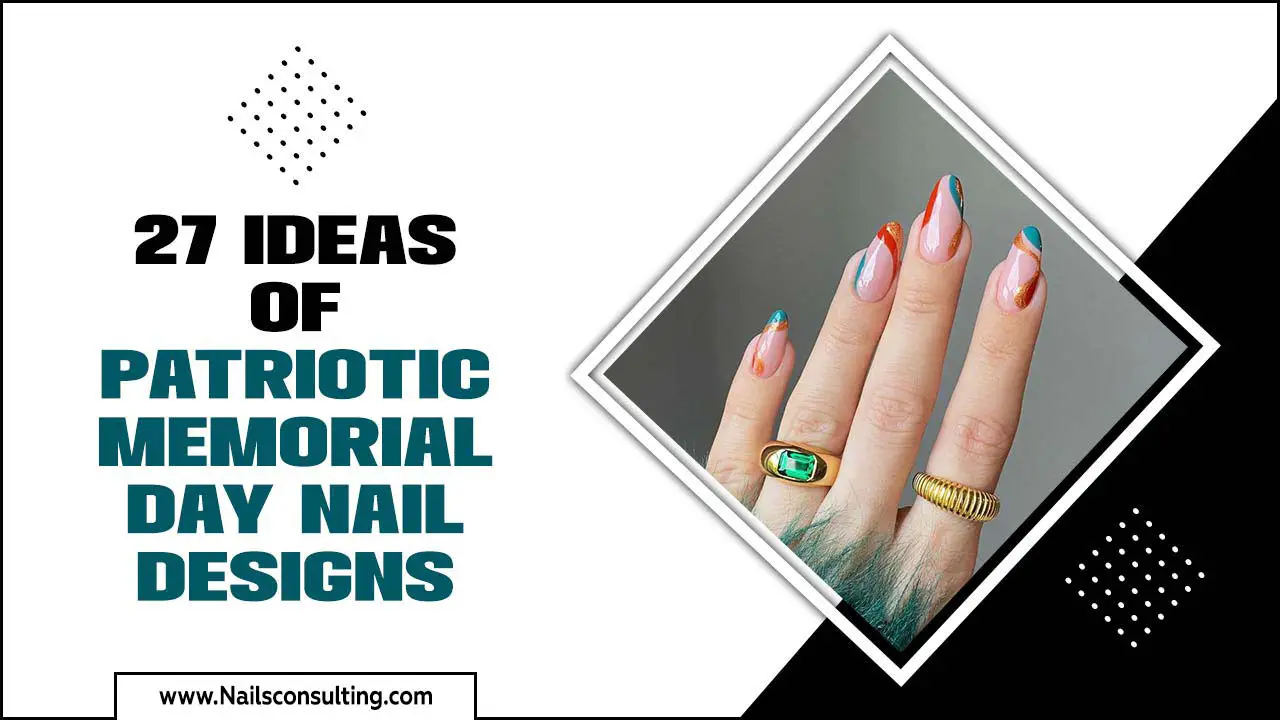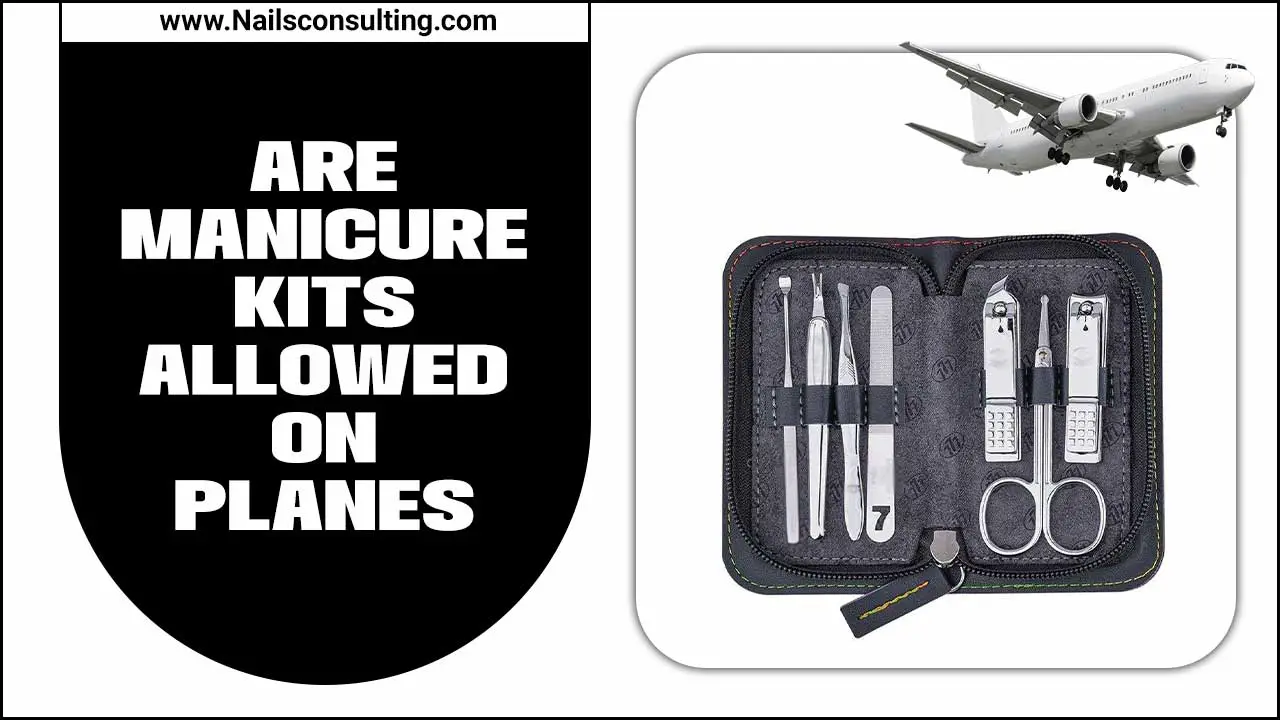Learn how to create a stunning ombre nail design with these genius tips! This beginner-friendly tutorial breaks down the process into simple steps, making it easy to achieve a beautiful gradient finish at home. Get ready for salon-worthy nails you can do yourself!
Dreaming of that gorgeous, blended nail color that looks chic and modern? Ombre nails, with their smooth transition from one shade to another, are a total showstopper. But if you’ve ever tried to create this look yourself, you might have ended up with harsh lines or a muddy mess. Don’t you worry! It’s easier than you think to get that perfect, gradient effect.
This guide is here to rescue your manicure dreams. We’ll walk you through each step with super simple instructions, sharing all the little tricks that make a big difference. You’ll be creating beautiful ombre designs in no time. Ready to dive into the colorful world of ombre nails?
Your Ombre Nail Design Tutorial: The Ultimate Beginner’s Guide
Ombre nails are a beautiful way to add depth and style to your manicure. The word “ombre” means shaded in French, referring to the smooth transition of color. It’s a trend that’s been around for a while, but it always feels fresh and exciting. Whether you love soft, pastel blends or bold, contrasting hues, ombre is for you.
This tutorial is designed for absolute beginners. We’ll break down the process into easy-to-follow steps. You’ll learn about the tools you need, how to prep your nails, and the best techniques for achieving that flawless gradient. Get ready to impress yourself and everyone around you with your new nail art skills!
What You’ll Need: Your Ombre Nail Essentials
To get started with your ombre nail adventure, gather these essential items. Having everything ready before you begin will make the process smooth and enjoyable.
Essential Tools and Products:
- Base Coat: Prepares your nails and helps polish adhere better.
- Top Coat: Seals your design and adds shine.
- Nail Polish Colors: Choose 2-4 shades that blend well together. Lighter shades often work best for beginners.
- Sponge or Makeup Sponge: This is your secret weapon for blending colors! A clean, dry makeup sponge or a dedicated nail art sponge will work perfectly.
- Painter’s Tape or Liquid Latex: To protect your skin from polish. This makes cleanup a breeze!
- Nail Polish Remover: For any necessary clean-up.
- Cotton Swabs or Small Brush: For precise cleaning around the cuticle area.
- Optional: Gradient Tool: Some specialized tools can help create smoother blends, but a sponge is perfectly effective.
- Optional: Glitter Polish: To add a touch of sparkle to your ombre!
Pro Tip: For the best blending, choose polishes with similar finishes (e.g., all cream, all shimmer). Avoid mixing drastically different formulas to start.
Prepping Your Nails for Ombre Perfection
Just like any great artwork, a good base makes all the difference. Proper nail prep ensures your ombre design lasts longer and looks smoother. It’s a crucial step that busy nail lovers often overlook, but it’s totally doable!
Step-by-Step Nail Prep:
- Clean Your Nails: Start with clean, dry nails. Remove any old polish thoroughly.
- Shape Your Nails: File your nails to your desired shape. Gently push back your cuticles using a cuticle pusher. You can also trim any dead skin around your cuticles if needed.
- Buff Your Nails: Lightly buff the surface of your nails with a fine-grit buffer. This creates a smooth surface for the polish to adhere to and helps remove any natural oils that might prevent polish from sticking.
- Apply Base Coat: Apply a thin, even layer of your chosen base coat. Let it dry completely. This step protects your natural nails from staining and gives your polish something to grip onto.
Taking a few extra minutes for this prep work will pay off with a more professional-looking and longer-lasting ombre manicure. Your nails will thank you!
The Genius Ombre Nail Design Tutorial: Step-by-Step
Now for the fun part! We’ll guide you through the creation of a beautiful ombre nail design. This method focuses on using a sponge for seamless color blending – it’s beginner-proven!
Your Ombre Creation Process:
- Apply Your First Color: Paint one or two coats of your lightest nail polish color onto your nails. This will be the shade that shows up primarily at the tips or base, depending on your design. Let this dry completely. This is important! Rushing this step can lead to a smudged mess.
- Protect Your Skin: This is where the painter’s tape or liquid latex comes in. Apply it around your nail bed, covering your cuticles and skin. This creates a barrier so that when you sponge, you don’t get polish all over your fingers. Leave a small gap between where the tape ends and your nail polish starts.
- Prepare Your Sponge: Cut a makeup sponge into a few smaller pieces. You want a piece that’s comfortable to hold and use. Lightly dampen it with water and squeeze out the excess. This helps the polish absorb less into the sponge, allowing for a smoother transfer to your nail. Some experts suggest using a dry sponge for more opaque colors, or a slightly damp one for sheerer polishes. Experiment to see what works best for you!
- Load the Sponge with Polish: This is the key to the gradient look. Apply your lightest color along one edge of the sponge, and your next darker color right next to it, touching the first color. If you’re using three colors, apply them in stripes next to each other. The goal is to have the colors touching so they can blend.
- Begin the Ombre Application: Gently dab the sponge onto your nail, starting from the cuticle area and moving towards the tip. You want to dab, not wipe or drag. Repeat this dabbing motion. You’ll see the colors begin to transfer and blend onto your nail.
- Reload and Redab: You may need to reapply polish to your sponge and dab multiple times to achieve your desired color intensity and blend. For a more intense gradient, you can reload the sponge and target specific areas. For a softer blend, use lighter dabbing pressure.
- Repeat for Each Nail: Clean your sponge (or use a new one) and repeat the process for each nail.
Genius Tip: For a smoother blend, you can “reload” the sponge with polish and dab it onto a piece of paper or a palette a couple of times before pressing it onto your nail. This helps to meld the colors on the sponge before they hit your nail, resulting in a finer gradient.
Adding More Colors (The Gradient Technique)
Want to go beyond two colors? The sponge method is easily adaptable for more shades. The key is to create a seamless transition.
When applying polish to the sponge, ensure each color touches the one next to it. Think of it like painting stripes on the sponge: Lightest color | Medium color | Darkest color. When you dab, the sponge will press these colors onto your nail, and the edges where they meet will begin to blend.
If you’re using three or even four colors, you might need to dab a bit more or reapply polish to the sponge more frequently. Don’t be afraid to experiment with the pressure and number of dabs. The beauty of DIY is that you can adjust it until you love it!
Cleaning Up for a Polished Finish
Once you’ve applied the ombre design to all your nails (and the polish is still a little wet), it’s time for cleanup. This is where your patience pays off.
- Remove the Protective Barrier: Carefully peel off the painter’s tape or scrape away the liquid latex.
- Clean Edges: Dip a cotton swab or a small, stiff brush into nail polish remover. Gently trace around your nail bed to clean up any polish that may have gotten onto your skin. This step makes a huge difference in the final appearance of your nails. Use a clean part of the swab or brush as needed.
- Let It Dry: Ensure your ombre design is completely dry before moving to the next step.
Sealing the Deal with a Top Coat
The final step is crucial for longevity and shine.
- Apply Top Coat: Apply a generous, even layer of your favorite top coat over your entire nail, making sure to cap the free edge (paint a tiny bit along the very tip of the nail). This seals in the design and protects it from chipping.
- Add Sparkle (Optional): If you want to add glitter and further blend the ombre effect, now is the time! Apply a glitter top coat over the dried ombre.
- Let It Cure: Allow your top coat to dry completely. This might take a bit longer if you’ve applied a thick layer or a glitter polish.
You’ve done it! You’ve created a beautiful ombre nail design. Give yourself a pat on the back – you’ve earned it!
Genius Tips for Flawless Ombre Nails Every Time
Beyond the basic steps, a few insider tricks can elevate your ombre game from good to absolutely stunning. These are the secrets that make DIY ombre look professionally done.
Tips for Seamless Blending:
- Color Choice Matters: Start with colors that are close in shade. For example, light pink to medium pink, or light blue to slightly darker blue. This makes blending much easier for beginners.
- Sponge Density: The type of sponge can impact the blend. A porous sponge will absorb more polish, while a denser one may transfer polish more sharply. Experiment with different textures!
- Damp vs. Dry Sponge: A slightly damp sponge can help create a smoother, more blended effect by absorbing less polish. A completely dry sponge will give you a more vibrant color transfer but might show more distinct lines.
- The “Roll” Technique: Instead of just dabbing up and down, try a slight rolling motion with the sponge as you press it onto the nail. This can help blend the edges more effectively.
- Multiple Thin Layers: Instead of trying to get the full color payoff in one go, apply thin layers of color with the sponge. Let each layer set slightly, then reapply. This builds opacity gradually and creates a softer transition.
- Don’t Fear the Cleanup Brush: A clean, precise cleanup brush or cotton swab dipped in remover is your best friend for refining the edges. It can make a world of difference!
- Work Quickly but Not Rushed: Apply the polish to the sponge and then to the nail relatively quickly so the polish doesn’t start to dry on the sponge. However, don’t rush the dabbing motion itself; take your time with the application to the nail.
Advanced Ombre Techniques to Try:
- Horizontal Ombre: Instead of blending from tip to cuticle, blend colors from one side of the nail to the other. Apply the lighter color on one side, the darker on the other, and blend in the middle.
- Ombre with Glitter: Apply your ombre as usual, then use a glitter polish over the whole nail or just on the blended area to add sparkle and further diffuse the color transition.
- Reverse Ombre: This flips the traditional gradient. The darkest color is at the cuticle, fading to the lightest color at the tip.
- French Ombre: A softer, more subtle version where the gradient starts with a sheer nude or pink at the cuticle and blends into a milky white at the tip.
- Using Regular Polish vs. Gel: While this tutorial focuses on regular polish, ombre can also be achieved with gel polish. The principles are the same, but the drying process involves a UV/LED lamp. For beginners, regular polish is often more forgiving.
Common Ombre Nail Design Challenges and Solutions
Even with the best tips, sometimes things don’t go as planned. Here’s how to tackle common ombre nail woes.
Problem: Harsh Lines
Solution: This usually means the polish dried too much on the sponge or on your nail before blending. Reload your sponge with fresh polish more frequently, ensure the colors are touching on the sponge, and try the “roll” technique. Don’t be afraid to add more dabs!
Problem: Muddy Colors
Solution: This can happen if your chosen colors are too similar or if you’re over-blending. Try using colors with more contrast. Also, clean your sponge thoroughly between applications, or use a fresh piece for each nail to avoid color contamination.
Problem: Polish Absorbed Too Much by the Sponge
Solution: Ensure you’re not pressing down too hard on the sponge. A slightly damp, not soaking wet, sponge can help prevent excessive absorption. Experiment with different sponge densities. You might need to apply a bit more polish to the sponge than you think!
Problem: Polish on the Skin
Solution: This is why protecting your skin with tape or liquid latex is crucial! If you skipped that step, use a small brush or cotton swab dipped in nail polish remover to carefully clean up the excess polish around your nail bed. This is a patience-testing step, but essential for a professional look.
Problem: Design Doesn’t Look Opaque Enough
Solution: You might need more layers. After your first ombre attempt dries, repeat the sponging process. You can also apply a solid color coat of one of your chosen shades underneath your ombre for a more intense base color.
Remember, practice makes perfect! Every time you try, you’ll get better at judging the pressure, the polish amount, and the blending consistency. For more insight into nail health and care, the American Academy of Dermatology offers valuable resources on maintaining healthy nails.
Frequently Asked Questions About Ombre Nails
Q1: Can I do ombre nails with regular nail polish?
A1: Absolutely! This tutorial focuses on using regular nail polish and a sponge, which is perfect for beginners. Gel polish can also be used, but it requires a UV/LED lamp for curing.
Q2: How many colors can I use for an ombre nail design?
A2: You can use two colors for a simple gradient, or three to four colors for a more complex blend. The key is to ensure the colors transition smoothly. For beginners, starting with two colors is recommended.
Q3: How do I clean the sponge for ombre nails?
A3: Disposable makeup sponges are ideal because they can be easily replaced. If you’re using a reusable nail art sponge, clean it immediately after use with nail polish remover and soap and water. Let it dry completely before the next use.
Q4: How long should I let each coat of polish dry?
A4: For regular polish, let each colored coat dry completely before applying the next or before sponging. Rushing this step is a common cause of smudging. For the base and top coats, ensure they are dry to the touch before proceeding.
Q5: My ombre looks streaky. What should I do?
A5: Streaky results often mean the polish dried too quickly on the sponge or nail, or you didn’t apply enough pressure. Reload the sponge more frequently, use colors that are touching on the sponge, and try a gentler dabbing or rolling motion. Don’t be afraid to apply multiple thin layers.
Q6: Can I achieve ombre nails without a sponge?
A6: Yes, you can! Some artists use a small brush to paint thin lines of color onto the nail and then blend them with a clean brush or a makeup sponge. Airbrushing is another professional method. However, the sponge method is widely considered the easiest for DIY beginners.
Understanding these common questions can help demystify the process and boost your confidence as you try out ombre nail designs.
Conclusion: Your Ombre Nail Journey Awaits!
There you have it! You’ve learned the secrets to creating a beautiful ombre nail design, from essential tools to genius tips for that perfect blend. We’ve covered how to prep your nails for success, the step-by-step sponging technique, and how to tackle common challenges.
Creating ombre nails at home is a rewarding experience. It allows you to express your style with a touch of artistry and creativity. Don’t be discouraged if your first attempt isn’t absolutely flawless. Nail art is a skill that improves with practice, and each manicure is a learning opportunity. Embrace the process, have fun with your color choices, and celebrate the unique designs you create.
So grab your favorite polishes, a trusty sponge, and get ready to transform your nails. You’ve got this! Go ahead and flaunt your gorgeous, DIY ombre nails – you certainly deserve to!




